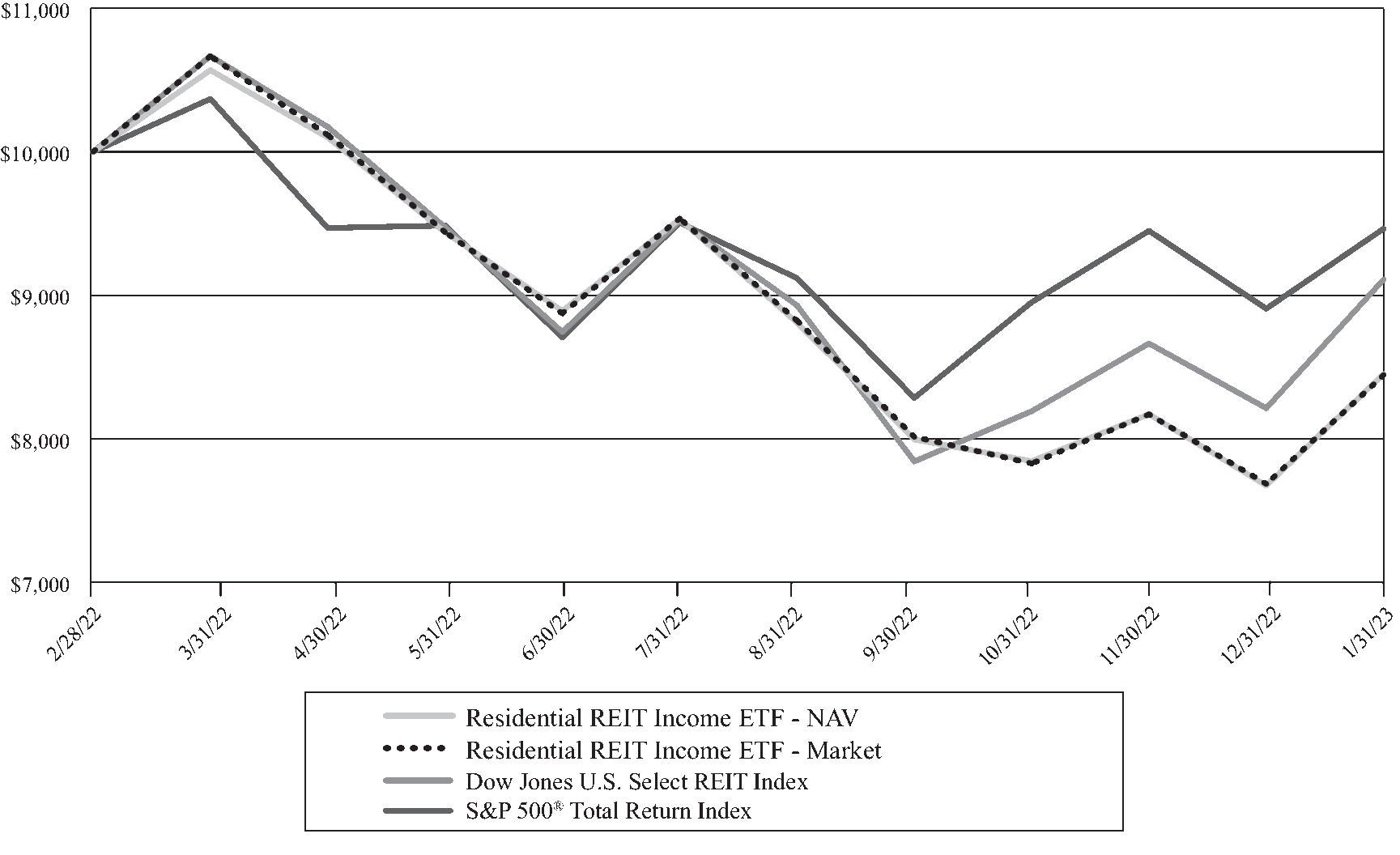be sold or disposed of in current market conditions in seven calendar days or less without the sale or disposition significantly changing the market value of the investment. If the Fund should be in a position where the value of illiquid investments held by the Fund exceeds 15% of the Fund’s net assets, the Fund will take such steps as set forth in the Program.
I.Reclassification of Capital Accounts. Accounting principles generally accepted in the United States of America require that certain components of net assets relating to permanent differences be reclassified between financial and tax reporting. These reclassifications have no effect on net assets or net asset value per share. For the period ended January 31, 2023, there were no reclassifications made.
J.Recently Issued Accounting Pronouncements.
•In June 2022, the FASB issued Accounting Standards Update 2022-03, which amends Fair Value Measurement (Topic 820) Fair Value Measurement of Equity Securities Subject to Contractual Sale Restrictions (“ASU 2022-03”). ASU 2022-03 clarifies guidance for fair value measurement of an equity security subject to a contractual sale restriction and establishes new disclosure requirements for such equity securities. ASU 2022-03 is effective for fiscal years beginning after December 15, 2023 and for interim periods within those fiscal years, with early adoption permitted. The Fund is currently evaluating the impact of these amendments on the financial statements.
|
NOTE 3 – PRINCIPAL INVESTMENT RISKS |
A.Concentration Risk. The Fund’s investments will be concentrated in the real estate industry. As a result, the value of shares may rise and fall more than the value of shares that invest in securities of companies in a broader range of industries.
B.Convertible Securities Risk. Convertible securities rank senior to the issuer’s common stock,but may be subordinate to senior debt obligations. In part, the total return for a convertible security may depend upon the performance of the underlying stock into which it can be converted. Convertible securities are also subject to counterparty risk which is the likelihood or probability that one of the parties involved in an agreement, or participating in a transaction, might default on its contractual obligation. Further, there is a risk that no suitable counterparties will be willing to enter into, or continue to enter into, transactions with the Fund which could affect the Fund’s performance.
C.Cybersecurity Risk. With the increased use of technologies such as the Internet to conduct business, the Fund is susceptible to operational, information security, and related risks. Cyber incidents affecting the Fund or its service providers may cause disruptions and impact business operations, potentially resulting in financial losses, interference with the Fund’s ability to calculate its NAV, impediments to trading, the inability of shareholders to transact business, violations of applicable privacy and other laws, regulatory fines, penalties, reputational damage, reimbursement or other compensation costs, or additional compliance costs.
D.Debt Securities Risk. The Fund invests in debt securities, such as bonds and certain asset-backed securities, that involve certain risks, including:
•Call Risk. During periods of falling interest rates, an issuer of a callable bond held by the Fund may “call” or repay the security prior to its stated maturity, and the Fund may have to reinvest the proceeds at lower interest rates, resulting in a decline in the Fund’s income.
•Event Risk. Event risk is the risk that corporate issuers may undergo restructurings, such as mergers, leveraged buyouts, takeovers, or similar events financed by increased debt. As a result of the added debt, the credit quality and market value of a company’s bonds and/or other debt securities may decline significantly.
•Extension Risk. When interest rates rise, certain obligations will be repaid by the obligor more slowly than anticipated, causing the value of these securities to fall.
E.Derivatives Risk. The Fund’s derivative investments have risks, including the imperfect correlation between the value of such instruments and the underlying assets or index; the loss of principal, including the potential loss of amounts greater than the initial amount invested in the derivative instrument; the possible default of the other party to the transaction; and illiquidity of the derivative investments. If a counterparty becomes bankrupt or otherwise fails to perform its obligations under a derivative contract due to financial difficulties, the Fund may experience significant delays in obtaining any recovery under the derivative contract in a bankruptcy or other reorganization proceeding. The derivatives used by the Fund may give rise to a form of leverage.


